The Japanese satellite, Hayabusa2, has sent back phenomenal videos and pictures from two “Minerva 2” rovers and at least one robot dispatched to the asteroid 162173 Ryugu, between Earth and Mars.
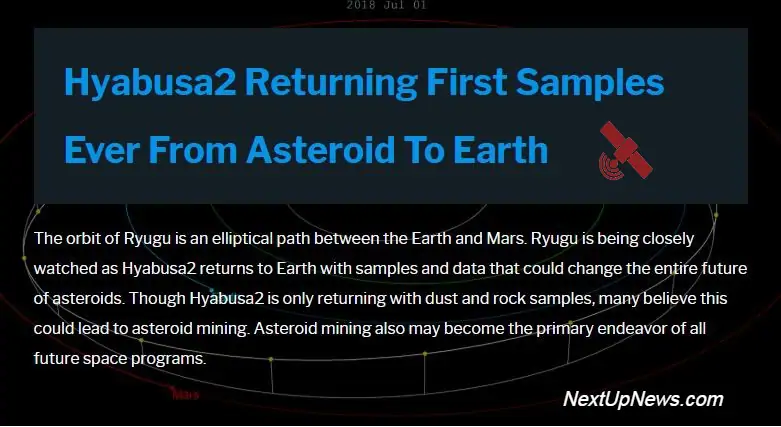
Quick Facts About 162173 Ryugu Asteroid
- The 162173 Ryugu asteroid is thought to be 8.5 million years old.
- The 162173 Ryugu asteroid is about 1 kilometer in diameter and has a radius of 1,427.2 feet.
- The 162173 Ryugu asteroid is 450 billion kilograms in weight.
- The 162173 Ryugu asteroid was discovered by The Lincoln Near-Earth Asteroid Research (LINEAR) project in 1999, a collaboration of the U.S. Air Force, NASA, and MIT.
- Along with the Japanese Minerva Rovers, a French-German rover also landed on Ryugu 162173.
- Asteroid was officially named “Ryugu” by the Minor Planet Center on 28 September 2015 (M.P.C. 95804) referring to Ryūgū (Dragon Palace) in Japanese folklore. – From Wikipedia
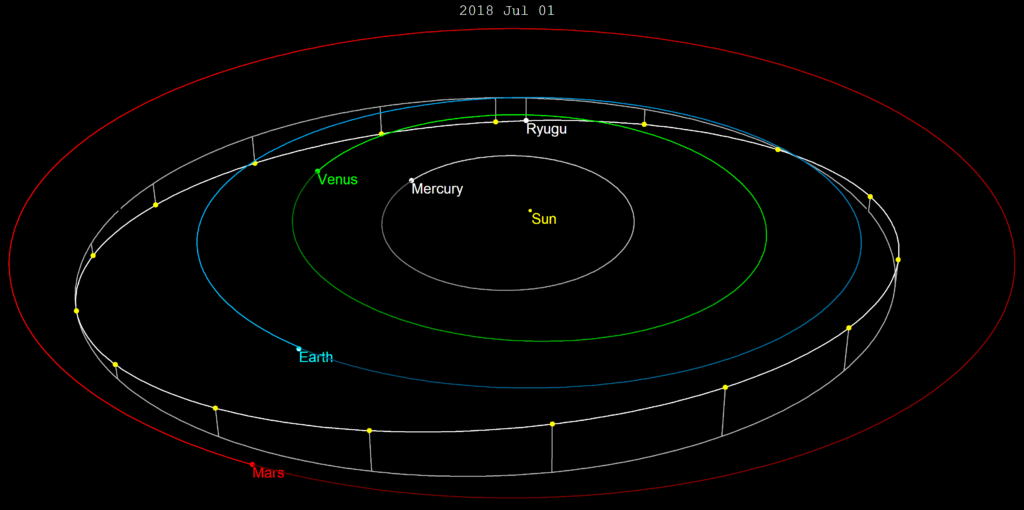
The satellite has also collected samples which are scheduled to be returned to Earth in December of 2020, this year. Hayabusa2 is currently on its way home flying through deep space to Earth and scheduled to land in Australia. The orbit depicted shows Ryugu with a white orbital track, Mars in red, and Earth in Blue.
The videos and pictures have just been released by Japanese Space officials, and published in the “Science” academic journal.
Man’s 1st Asteroid Landing

Amazing Image of Ryugu Asteroid
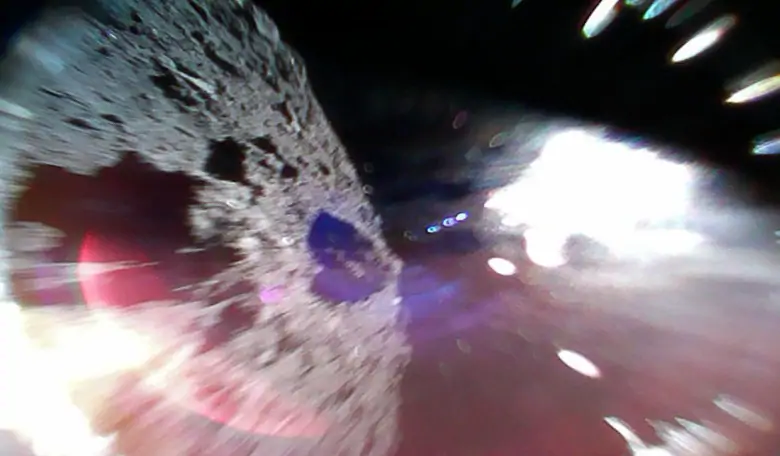
A Close Up Look At Ryugu From Hyabusa2 Leaving For Earth

The Surface Structure And Composition Of Asteroid 162173 Ryugu
Hayabusa2 has observed and captured the surface dust and rock – on the pile of rubble and rock known as the 162173 Ryugu “cb-type” asteroid. The surface is primarily a rocky ground full of craters, crevices, cliffs, jagged edges, rubble, dust, boulders and other rocky formations.
The Ryugu asteroid is described as a “top shaped” asteroid. Since the sampling and missions have been completed, it is now known that the surface contains a lot of unexpected red materials. Ryugu 162173 was thought to be a primarily blue asteroid on initial observations.
The colors are now known to be mostly blue and red. The actual materials are yet to be handled and studied by scientists and thus deemed space “stuff”. The materials are mainly fine dusts which are of course extraterrestrial in origin.
Actual Photo Of Asteroid 162173 Ryubu

Some of the current hypothesis include potential reasonings for the red colors observed on Ryubu 162173. It is thought that the red colors are the results of burning. The heat exposed to the asteroid could have been experienced in a single blast of solar flares, rays or similar radiation or they could have been a burning over a period of time where the asteroid was close to the Sun.
The reddish change in color could have been caused by, “space weathering, thermal metamorphism by solar heating, and/or pulverization by small impacts. Redder materials may have been shed from boulder surfaces by impact disruption and/or thermal fatigue.” From Science
The heating hypothesis seems to make sense due to the fact that the areas of blue are primarily located at the north and south poles, other than the cratered areas around the asteroid. This would be because the northern and southern poles are the two most hidden areas of the asteroid from the Sun.
“Science” CGI Image Of Asteroid Ryugu 162173 Composition
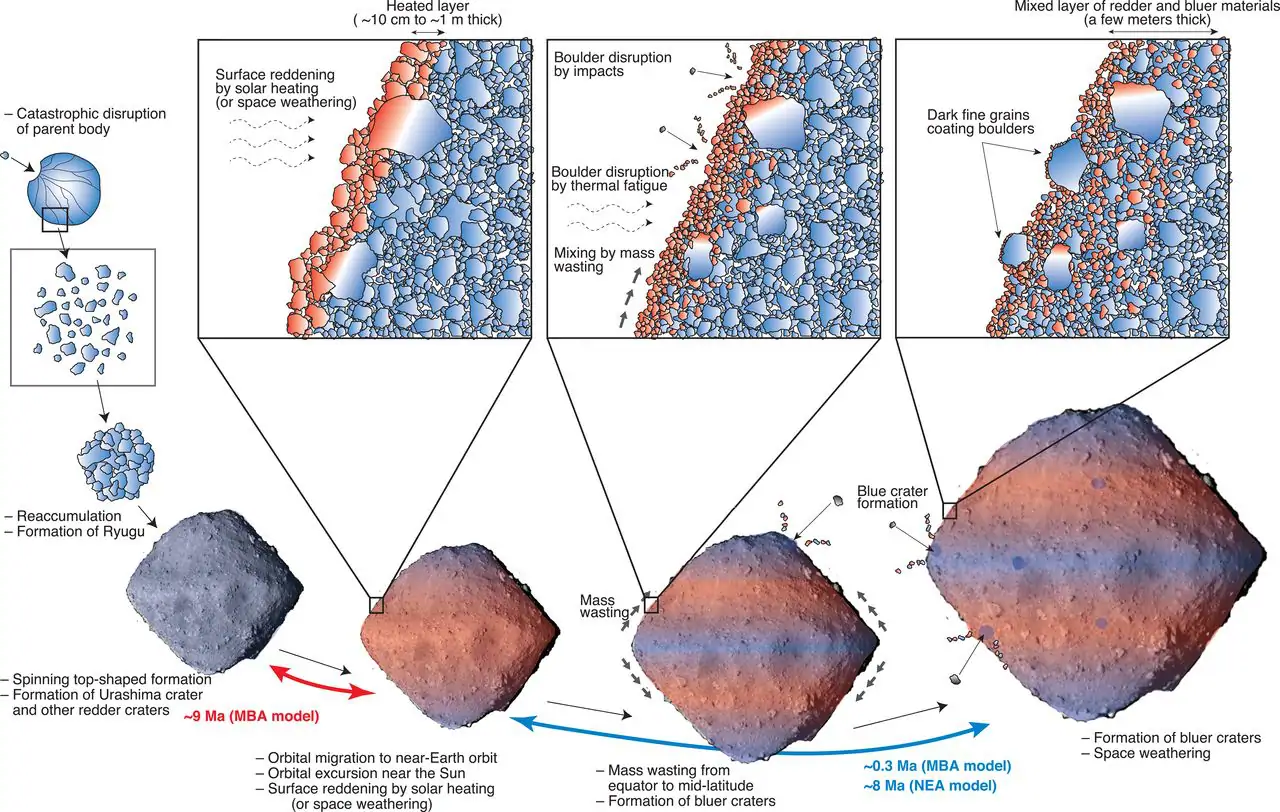
Once scientists retrieve the samples from the materials captured on the Hayabusa2 mission, they will know much more. It is expected that the materials are composed of “low abundance of hydrous minerals revealed by global observation”. It is also known that the asteroid has aqueous alterations, which means there is evidence of H20 that existed on the surface at some time in the past. The water could have existed in icy form, vapors or actual liquid, but is obviously unknown.
Hyabusa2 Landing on Ryugu
Hyabusa2’s Second Landing On Ryugu
SOURCES
- https://science.sciencemag.org/content/368/6491/616.5
- https://www.spacedaily.com/reports/Hayabusa2s_touchdown_on_Ryugu_reveals_its_surface_in_stunning_detail_999.html
- https://en.wikipedia.org/wiki/162173_Ryugu#Orbit
- https://room.eu.com/news/hayabusa2-rovers-land-successfully-on-ryugu
- https://www.sciencealert.com/stunning-high-res-touchdown-images-of-asteroid-ryugu-reveal-its-heated-past

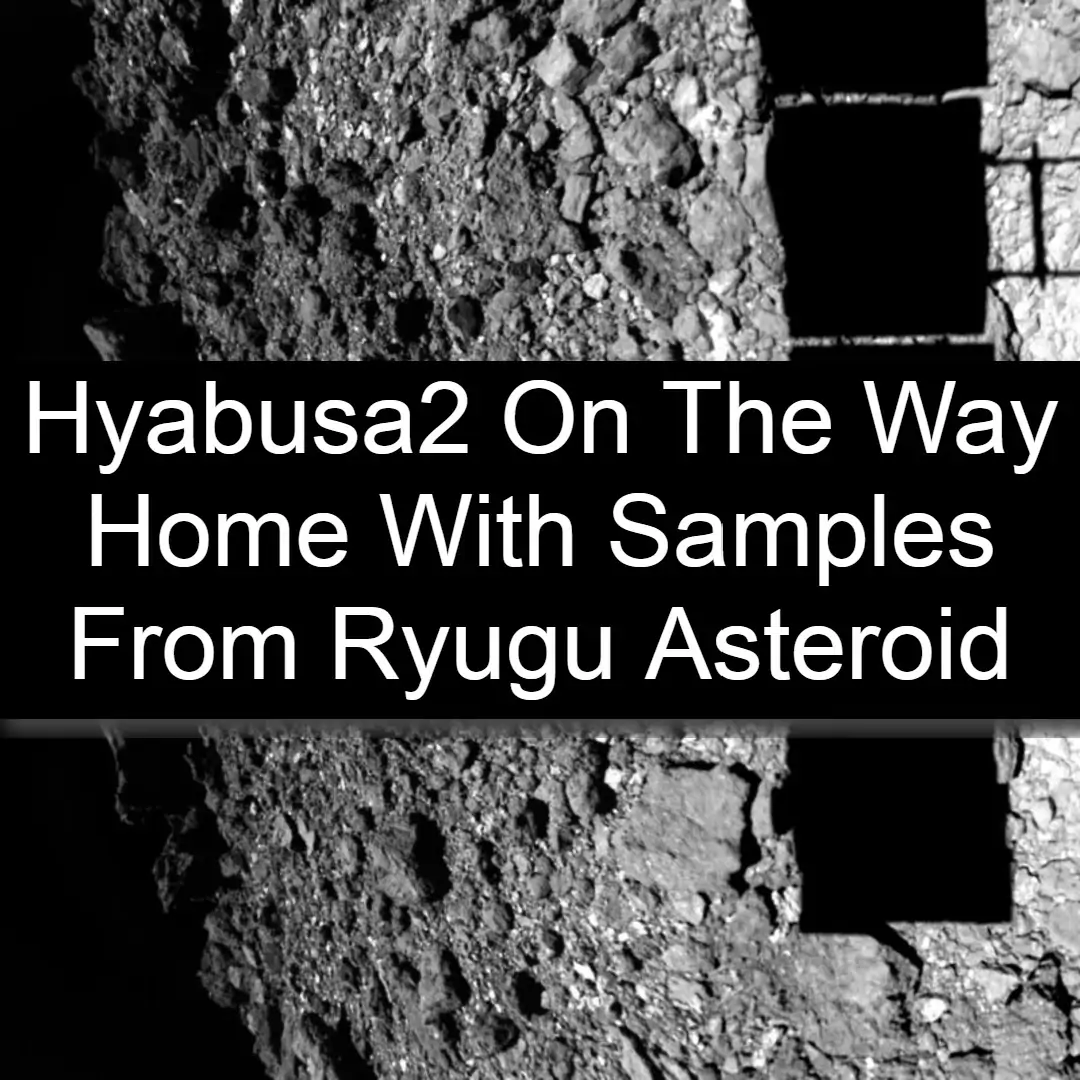
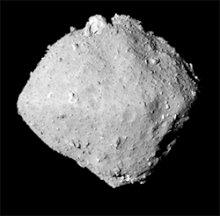

Average Rating